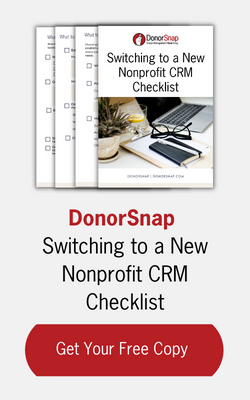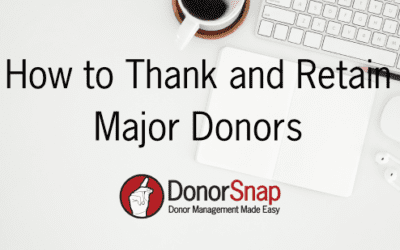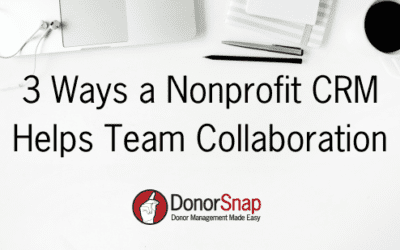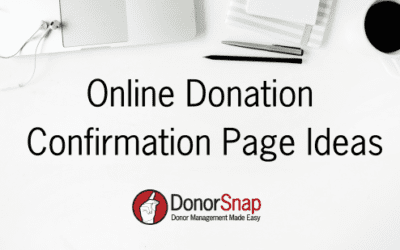Nonprofit events are a great opportunity for organizations to raise money and spread awareness about their cause. Events are also important for donor retention, and can help nonprofits connect with potential new members. If planned properly nonprofits can see a wide variety of benefits from events.
In this guide, discover everything you need to know about planning your next nonprofit event.
What is the Purpose of Nonprofit Events?
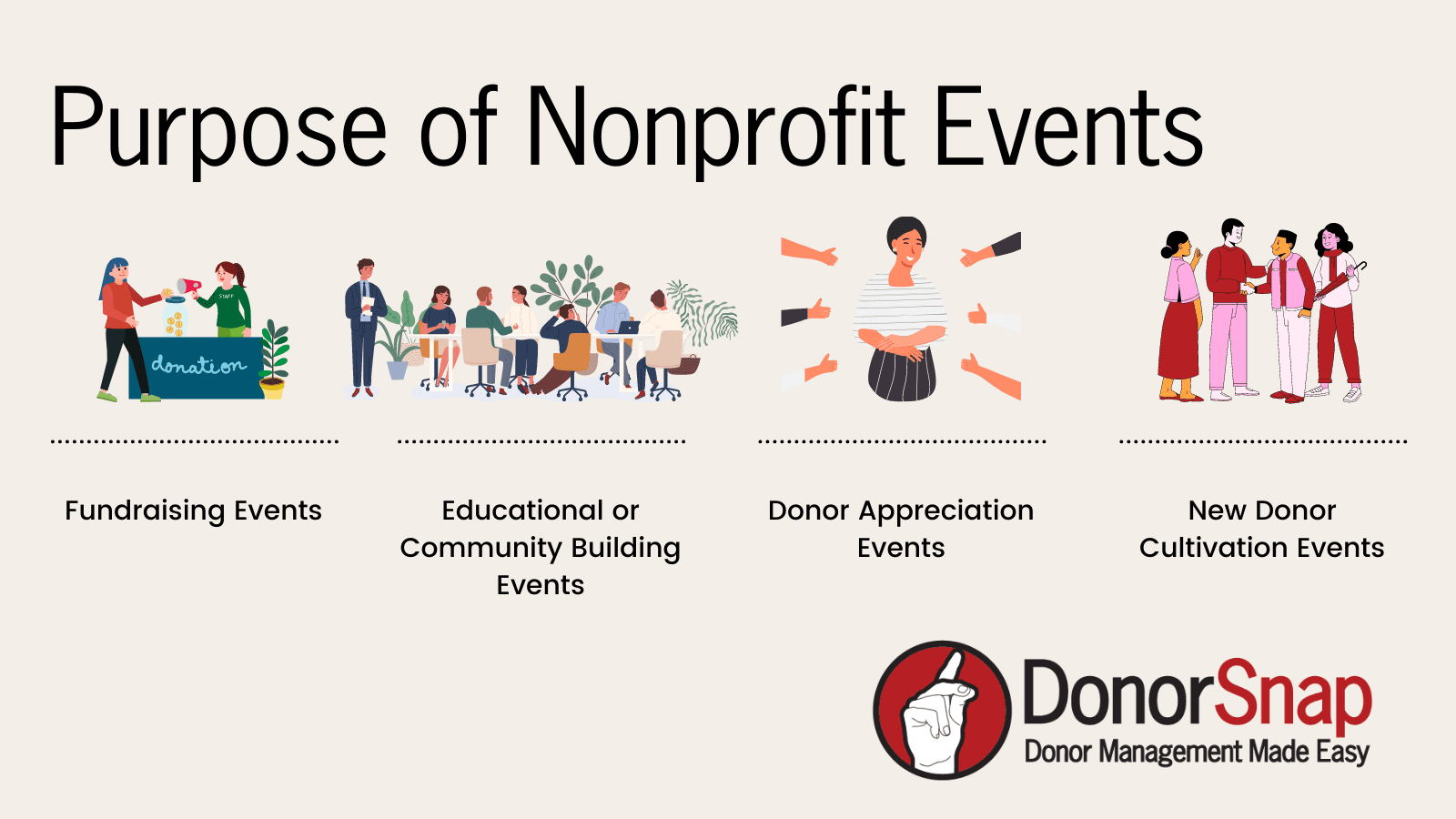
Most nonprofit events serve the following purposes. They are either fundraising events, educational or community building events, donor appreciation events, or new donor cultivation events. Some events are a combination of any four of these. Nonprofits host events to connect with donors on a more personal level. Also, events create a sense of community. Many people support an organization because they want to connect with other like-minded individuals. Nonprofit events can help your supporters connect and build relationships with one another.
What Types of Events are Good for Nonprofits?
Every nonprofit organization is different and will have varying opportunities for events. For example, a nature center might host events like hikes, nature lectures, or bird watching. Likewise, an arts organization may host art shows, performances, or auctions. Depending on the purpose of your event, the type of event you host will vary. Some popular types of events nonprofit organizations host are:
- Galas
- Parties
- Picnics
- Open Houses
- 5ks
- Fairs or Carnivals
- Auctions
- Lectures or classes
- Hikes or outdoor activities
- Art Show
- Bake Sale
- Wine Tasting
- Oktoberfest
Should You Collect Donations at Your Nonprofit Events?
Depending on the purpose and type of event, your nonprofit may choose to collect donations. It is appropriate to collect donations at events, and your nonprofit should make it easy for participants to donate.
However, it is important event attendees do not feel pressured to give at that moment. Consider the type and purpose of the event. If it is for new donor cultivation some people may feel inspired to give right away, whereas others may need a few more touch points before they are ready to give.
If you are collecting donations at events, a card swiping device can help you easily collect credit card donations. You should also have paper donation forms handy in case someone wants to donate via cash or check.
DonorSnap has an On-Site app that allows nonprofits to easily collect and process donations at events. The On-Site app will load donor contact information quickly, and a card swiping device will ensure transactions are fast and error-free. Learn more about the DonorSnap On-Site App here.
Benefits of Well Planned Nonprofit Events
A successful nonprofit event will leave donors feeling inspired and engaged. It is important to thoughtfully plan your event for a number of reasons. Events can be costly, but if tailored to the right group they can result in lasting relationships and increased donations. Your events have the potential to retain current donors, attract new ones, and encourage more people to be champions of your cause.
10 Steps to Planning Your Next Nonprofit Event
1. Answer Important Questions to Lay Groundwork for the Event
Every event is different so it is important to lay the groundwork for the event first and foremost. This will drive all of your event decisions. Some of the most important questions you need to ask when you start planning your event are:
What is the goal of the nonprofit event?
First, you’ll want to decide if the event is a donor appreciation event, a community building event, a fundraising event, a new donor cultivation event, or a combination of any of the four. If it is a fundraising event, set the amount you are hoping to raise. If you are hoping to attract new donors, have a number in mind. Be specific about your goals so that after the event you can easily measure if it was a success.
What type of nonprofit event are you putting on?
From here, decide what type of event you are putting on. If it is a donor appreciation event, is it a gala or dinner party? If you are looking to engage members of the community are you putting on a 5k? The goal of your event will drive what type of event you are planning to host.
What is the budget for your event?
Your event’s budget will be a driving force for many decisions, so you will need to come up with it early in the planning process. Oftentimes nonprofits are working on a limited budget with an event. That doesn’t mean you have to sacrifice. Many local organizations are willing to donate to your event. Think of creative ways you can partner with your local community to keep your event costs low.
Also, once you have a budget it is important to keep detailed track of all costs so you don’t go over budget. Keep this in mind when you are getting quotes from vendors and keep track of everything in a spreadsheet.
Who is Invited to Your Nonprofit Event?
It is also important to know who is invited to your event. Is it open to the public through ticket sales? Or, is it an invite-only donor appreciation event? Are only major donors invited, or are all members of your community welcome? On top of that, you should have a guest count to help you with your planning and budgeting. It is also helpful to know the demographics of your guests so you can plan an event that resonates best with them.
What is the Date, Time, and Location of Your Event?
You will also need to set a date, time, and location for your event before you can really start planning. Try to secure these as soon as possible so you can start promoting your event or sending out invites. In order to increase attendance, be thoughtful about the date you pick. If there are key board members or supporters you know you want to attend check-in with them first.
Also, connect with other nonprofits in your community and discuss events you all have planned. You likely have overlapping supporters and should work together to not have your events fall on the same day. Similarly, when picking a location, choose somewhere that is easily accessible to the majority of your guest list.
2. Decide on a type of nonprofit event and theme
Once you have answered the important questions above and laid the groundwork for planning your event, the fun can start. Once you know your goals, budget, purpose, etc. you can plan what type of event you are having and choose a theme. This all depends on what you are doing and who your target audience is.
Although this step is fun, it should be strategic. Consider your audience and your goals and then come up with an event that will meet those. For example, if you are planning a thank you event for all of your community members, you will want something fun, accessible, and lower cost. This could look something like a family picnic in the park. Since it is family-oriented this will help drive your next decisions such as entertainment and food.
On the other hand, if you are hosting a fundraising event with the intention of attracting new millennial donors, your theme should appeal to that target. Think of a theme that aligns with your mission if possible and make it fun and appealing to that demographic. It could be a black and white cocktail party or a 90s-themed dance party.
3. If the Nonprofit Event is Invite Only Create Guest List & Invitations
Once you have all of your logistics ironed out, you can start inviting your guests. Make sure you have the time, date, location, theme, and activities for the evening set. This way, you will have as much information available when inviting your guests.
Invite-only events are common for donor appreciation events. For example, you may host a yearly donor appreciation event for major donors of $5,000+. Decide who will be invited to your event and then create your guest list. Hint: You can create your lists in DonorSnap ahead of time, they will automatically update as the donor’s criteria change.
Next, decide how you will invite your guests. Send a mass email to your guest list with instructions on how to RSVP. A better option for a more formal event is to do print invitations or use an online invitation service like Paperless Post. It never hurts to have a follow-up plan for people who have not RSVPd by a certain date. Such as following up with a phone call as you approach the RSVP date, as well as an email reminder.
4. If Your Nonprofit Event is Ticketed, Set up a Promotion Strategy
If your event is not invite-only your invitation approach will be different. You should still create invitations with all the event details, but you will want to share it publicly. If your event is open to the public, it is safe to assume you might have ticket sales.
DonorSnap Tip: Create a Responsive Form in DonorSnap for ticket sales to your event. This will help you easily collect money and keep track of your guest list all in one place.
To promote your event, put together an appealing invitation with all of your event details. Tools like Canva can help you create beautiful invitations without any design experience. Once you have your design complete, email it to your entire mailing list. Share it on social media and reach out to your local news outlets. Most local papers will be happy to share nonprofit events in their area.
5. Connect with Potential Sponsors for Your Nonprofit Event
Nonprofit events can be expensive, but getting sponsors for your event can help keep your budget low. It is important to have most of your details ironed out before you start reaching out to sponsors. This way you can think strategically and pick the best sponsors for the particular event. For example, if you are hosting an art auction and dinner, you might want to connect with a local custom art framing company. Because people attending the event will have an interest in art, they are a great target market for an event sponsor. Sponsors should always align with your event values.
6. Recruit Volunteers for Your Event
If you need volunteers for your event, start recruiting them. If you have set up a successful volunteer program, reach out to your pool of volunteers interested in events. Make tasks specific such as ticket collector, someone to run the donation/merch booth, etc. Once people sign up to volunteer make sure you stay in contact with them leading up to the event so they know what to expect. Tip: Using SMS messaging can be super effective when working with volunteers at an event.
7. Shop Around for Event Vendors
You will have to pay for some part of your events. When you know what will be handled by sponsors you can then start reaching out to vendors for everything else you need. This will probably include food, entertainment, venue (which should have been secured already), and other specifics based on the type of event.
Start calling around to get quotes as early as possible. Make sure you let vendors know you are a nonprofit as they might offer you a discount. Also, confirm order deadlines for all of your vendors so you will have everything ready for the day of your event.
8. Develop a Plan for Engaging with Event Attendees
The purpose of most nonprofit events is either to engage or inspire donors. If you want your event to be a success, think strategically about how you will engage with event attendees to either show appreciation or let them know more about your cause.
This can look like talking points for staff and board members when mingling. The use of media such as images, video, signage, or interactive displays helps convey your message. Or, inviting inspiring speakers or entertainment that relates directly to your cause.
The sky’s the limit with how you engage your event attendees, but make sure that it is in line with your mission and leaves guests with a feeling of connection and inspiration.
9. Send a Post Event Thank You and Follow Up
The time after an event is critical for connecting with attendees. You first and foremost should be thanking them for attending your event. On top of that, this is a great time to recap the success of the evening so they feel excited about their contribution and participate again. Sending out a thank you email, with photos from the event, and stats on the evening will help keep the event flames going. You can make this thank you public and share it across social channels. This in turn will also be seen by people who could not attend the event. This may help recruit more attendees for the following year.
10. Have a Post Event Recap with Your Team
The last step to hosting successful events is to recap with your team directly after the event. Take detailed notes on the evening and discuss what went well/ what could have been done better. Also, make note of volunteers and whether more or less were needed. It is also important to record if there was too much or too little of a certain item, such as food, drinks, etc. All of these details will help you better prepare and plan for the following year.
You should also always thank your staff and volunteers for their hard work. Putting on nonprofit events is a ton of work and would not be possible without the labor of your staff and volunteers. Make sure to provide them with a sincere thank you when recapping the event.
Final Thoughts
Nonprofit events are a great way to thank and engage your current donors and help bring in new supporters. It is important to thoughtfully plan out your events to ensure they are successful. Events can be expensive, so proper planning is important. Make sure you lay the groundwork for your event ahead of time. This includes setting your goals, budget, type of event, guest list, location, date, and time.
From there you should decide on a theme for your event to help draw more attendees. Once you know your theme and the details above you can create your invitations and start promoting the event. Your nonprofit should also develop a plan for engaging event attendees. The goal is to have people leave feeling inspired to give, or to take another action to help your nonprofit. Finally, post-event it is important to send an event recap and thank you to attendees, as well as brainstorm with your team on how to improve the event the following year.


